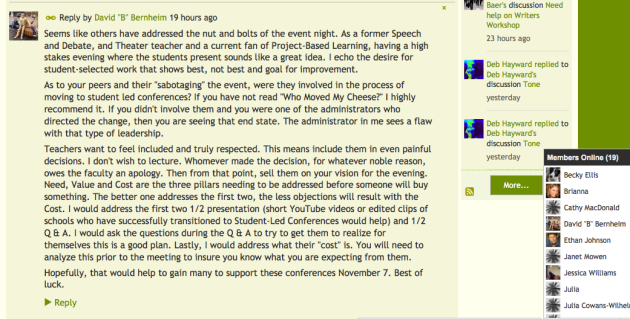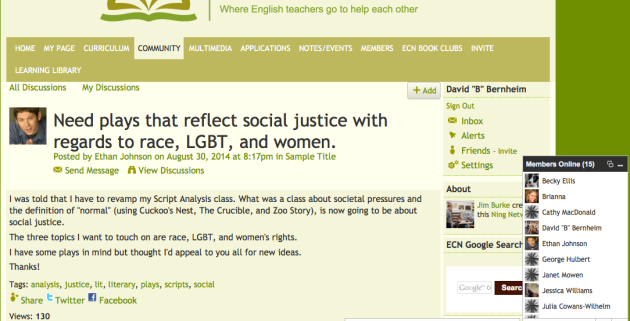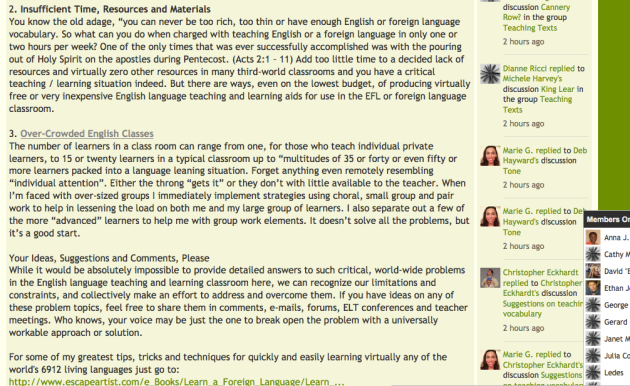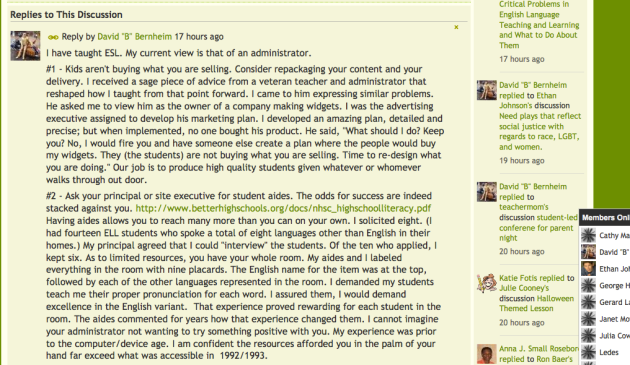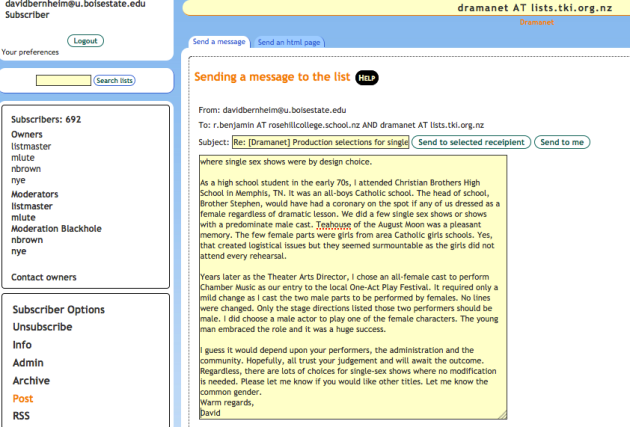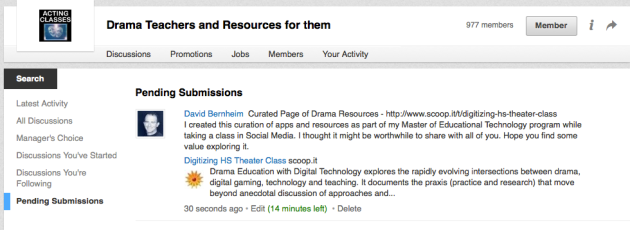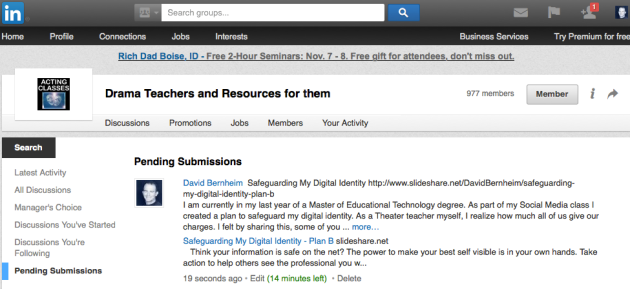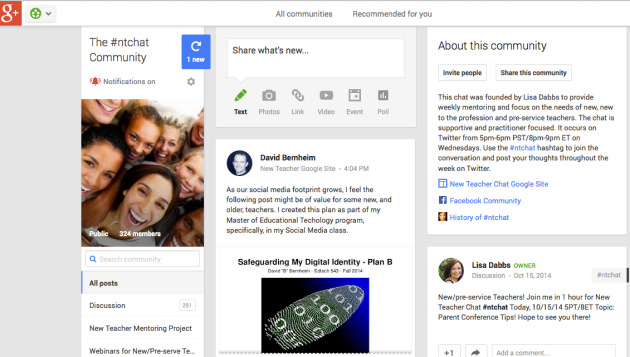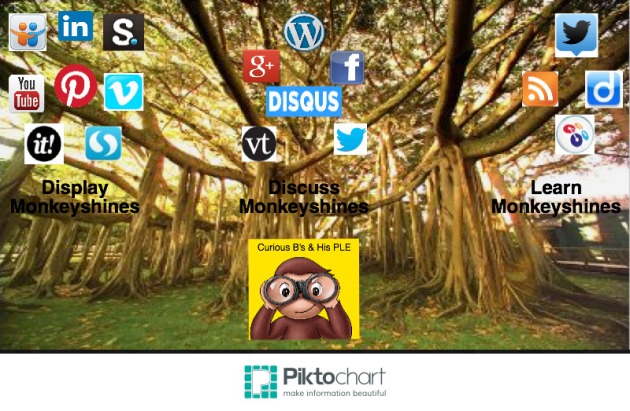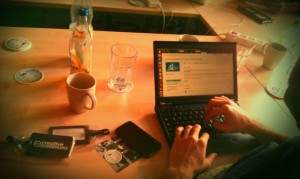Learning, Sharing, & Participating – Online Communities
October 27, 2014 Leave a comment
Tasked to join at least four communities during this module, our instructor tossed the gauntlet to not just lurk but extend ourselves by participating. Challenge accepted.
Initially, I lurked and tried to grasp if the community I chose fit my needs. Eventually, I offered thoughts, tips or ideas and freely shared my passions. I joined five total communities because I feared one was going to delay too long in accepting me and to be honest was afraid it was no longer current.
Post 1 – Teachermom posed a question about her school’s upcoming Student/Teacher/Parent Conferences. Evidently, someone in leadership (possibly her) made a decision to offer Student-led Conferences this year. It seems like an exciting evening for the 7th & 8th graders. Somehow, the teachers are not supporting the evening. The OP questions ways to help insure the evening planned for Nov 7th goes off without a hitch. Hard to accomplish her goals when the staff does not feel those goals belong to them. My reply is posted below.
Post 2 – I found another poster to whom I wanted to address. This poster was looking for plays that addressed questions of Social Injustice with regard to race, LGBT vantage points. His post follows.
Since I felt I could add to the conversation, I did.

I reply to Johnson’s request and offer a few titles that have not been offered while affirming some that have.
Post 3 – The next post was still in the same community. However, this question dealt with teaching ELL. Alia Mohammed Rashid addresses three concerns: lack of learner motivation; insufficient time, resources and materials; and overcrowded English classes. I will attach the screenshot here.
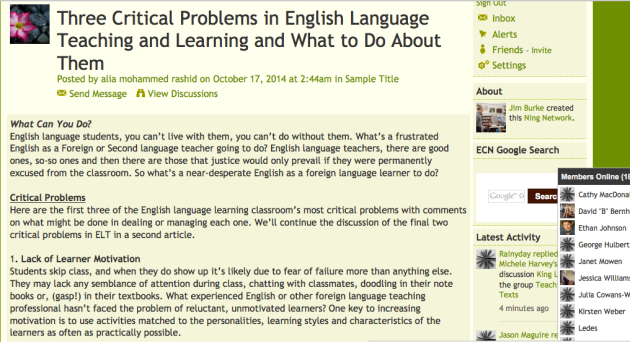
Part 1 of my peer’s questions. Not clear if this was a baited post or if his/her questions are real. I choose real.
My reply follows in two screenshots.
Post 4
This particular community took time to validate my request to join. Perhaps it was due to the New Zealand location. I really wanted to explore connecting across the globe. Benjamin posted a question of how to manage play selection in a single-sex school. Having performed in a single-sex environment at my high school and selecting plays for single-sex in public school, I felt compelled to respond.
Drama Teachers and Resources for them
Post 5
Alison Chaplin posted a question, “Are drama games worthwhile? What are their benefits?” Since I advocate the use of “drama” games, I felt compelled to reply.
Post 6
Since this was a community of fellow Drama/Theater teachers, I felt it worthwhile to offer my Curated page of Drama teacher resources.
Post 7
I also thought it worthwhile to share my plan for safeguarding digital identity.
New Teacher Chat Online Community
Through Google + and our Twitter Chat professional development, Lisa Dable, the creator of #ntchat, and I hit it off. She invited me to continue participating and I noticed she ran an online community for new teachers as well. I joined the community and felt compelled to offer my digital curation. (Lisa had already shared Safeguarding My Digital Identity – Plan B.)
Post 8
Post 9
I felt compelled to offer my plan to safeguard digital identity. I felt it would be of value to both new and not-so-new teachers on this site.
International Teacher Recruitment – Teaching Jobs Overseas (LinkedIn Online Community)
Since approval to the first Drama Community I joined was taking what felt like an eternity, I joined an online community through LinkedIn to help me meet my goal of returning to the Dean of Students office.
Post 10
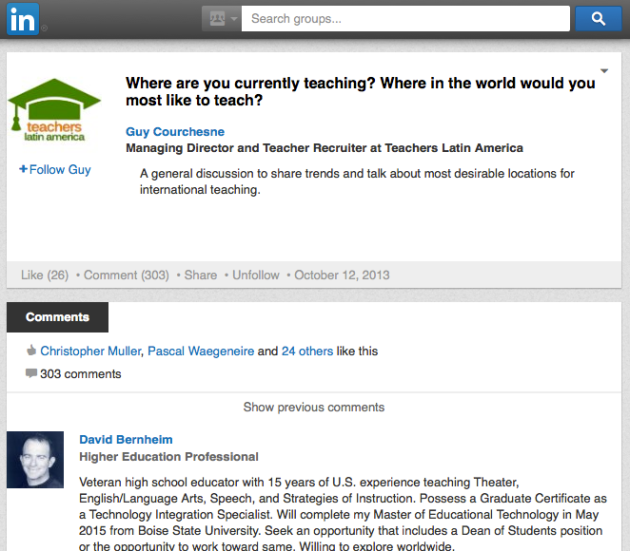
I joined an online community for International Teaching Jobs as a way to build traffic to my LinkedIn page.
This was a valuable assignment. Were it not for the post requirement, I might have taken a much longer road to posting and revealing myself. The experience challenged me to represent my brand and choose my words carefully. I am better for the experience.

